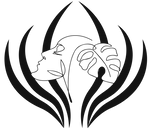Platyceriums
Platycerium is a genus of epiphytic ferns in the family Polypodiaceae. These ferns are commonly known as staghorn ferns due to the shape of their fronds, which resemble the antlers of a stag or deer. Platyceriums are native to tropical and subtropical regions of the world, including parts of Africa, Southeast Asia, Australia, and Central and South America.
Here’s a breakdown of key points about Platycerium (staghorn ferns):
-
Description
- Fronds: Platyceriums have two distinct types of fronds:
- Sterile fronds: These are the large, flat fronds that often resemble the shape of deer antlers. These fronds help the plant collect moisture and nutrients, and they can be quite large, sometimes up to several feet in length.
- Fertile fronds: These are smaller and less conspicuous. They are produced for reproduction and usually grow from the center of the plant.
- Growth Habit: They are epiphytic, meaning they grow on trees or rocks without being parasitic. They can be found in rainforests or other humid environments, where they attach to tree trunks or branches using their roots.
- Size: Depending on the species and growing conditions, staghorn ferns can vary greatly in size. Some species can grow as large as 3 feet (about 90 cm) in diameter, while others are smaller and more compact.
-
Types of Platycerium
There are many species and hybrids of Platycerium, but the most common and well-known species include:
- Platycerium bifurcatum – This is one of the most popular species and is often found in cultivation. It has large, forked fronds.
- Platycerium superbum – Known for its large, attractive fronds that are often wider than P. bifurcatum.
- Platycerium veitchii – This species has fronds that are silvery or pale green in color and is native to northern Australia and New Guinea.
- Platycerium grande – A larger species, known for its striking, broad fronds and is often grown in tropical gardens.
-
Growing Conditions
- Light: Platyceriums thrive in bright, indirect light. While they do well in a shaded forest understory in their native habitats, they need sufficient light to grow well in cultivation. However, direct sunlight can scorch their fronds.
- Temperature & Humidity: They prefer warm temperatures and high humidity, making them ideal for tropical or subtropical climates. They can be grown indoors in temperate regions, but humidity levels need to be maintained. A humidity level of around 50% or higher is ideal.
- Watering: These ferns like to be kept moist, but not waterlogged. The roots should never sit in water. Watering should be done regularly, but it's important to let the plant dry out between waterings to avoid root rot.
-
Mounting & Potting
- Mounting: Platyceriums are commonly mounted on pieces of wood, tree fern plaques, or hanging baskets in cultivation. Mounting allows them to grow naturally as epiphytes, with their roots free to cling to the surface and absorb moisture from the air.
- Potting: If growing in a pot, a well-draining potting mix is essential. A mix designed for orchids or other epiphytic plants works well, providing aeration and drainage.
-
Care Tips
- Watering: Water the fern thoroughly when the soil is dry to the touch, but avoid waterlogging the roots.
- Fertilizing: Fertilize Platyceriums every few weeks during the growing season (spring and summer) with a diluted liquid fertilizer. Avoid over-fertilizing, as this can burn the roots and fronds.
- Cleaning: Occasionally wipe the fronds with a damp cloth to remove dust or debris, as this helps the plant to better absorb moisture from the air.
-
Reproduction
- Spores: Like other ferns, Platyceriums reproduce via spores rather than seeds. The spores are produced on the undersides of the fertile fronds, and they are released into the air to grow into new plants. In cultivation, they can be propagated by dividing the plant or by growing from spores, though this is a slower method.
-
Common Problems
- Brown tips on fronds: This is often due to low humidity or too much direct sunlight.
- Yellowing fronds: Can be caused by overwatering, root rot, or nutrient deficiencies.
- Pests: Like many houseplants, staghorn ferns can be susceptible to pests like scale insects, aphids, or mealybugs. Regular inspection and appropriate pest management can help.
-
Uses and Aesthetic Appeal
- Indoor Decoration: Platycerium ferns are often used as statement pieces in interior design. They can be mounted on the wall like living artwork, and their unusual shape makes them a focal point in rooms with high ceilings or plant displays.
- Outdoor Gardens: In tropical and subtropical climates, staghorn ferns can be grown on trees or rocks in garden settings to replicate their natural epiphytic environment.
Platyceriums are fascinating, low-maintenance ferns that add a unique, sculptural element to both indoor and outdoor spaces. Their ability to grow on trees without harming them, combined with their striking antler-like fronds, makes them a popular choice among plant enthusiasts.
If you're looking to grow one, be sure to provide the right conditions—bright, indirect light, high humidity, and regular watering—and consider mounting the plant on a piece of wood or tree fern plaque to mimic its natural growing environment.
